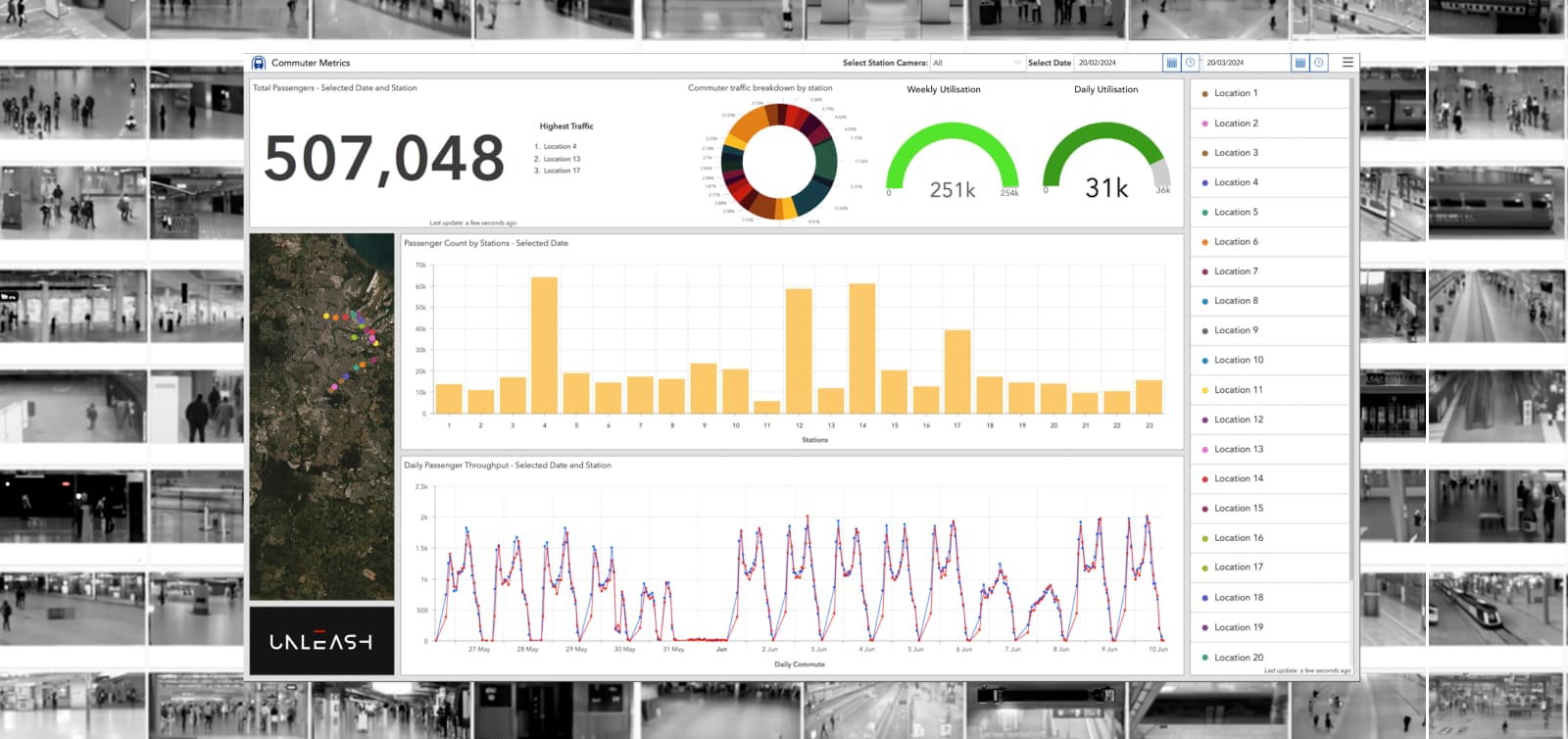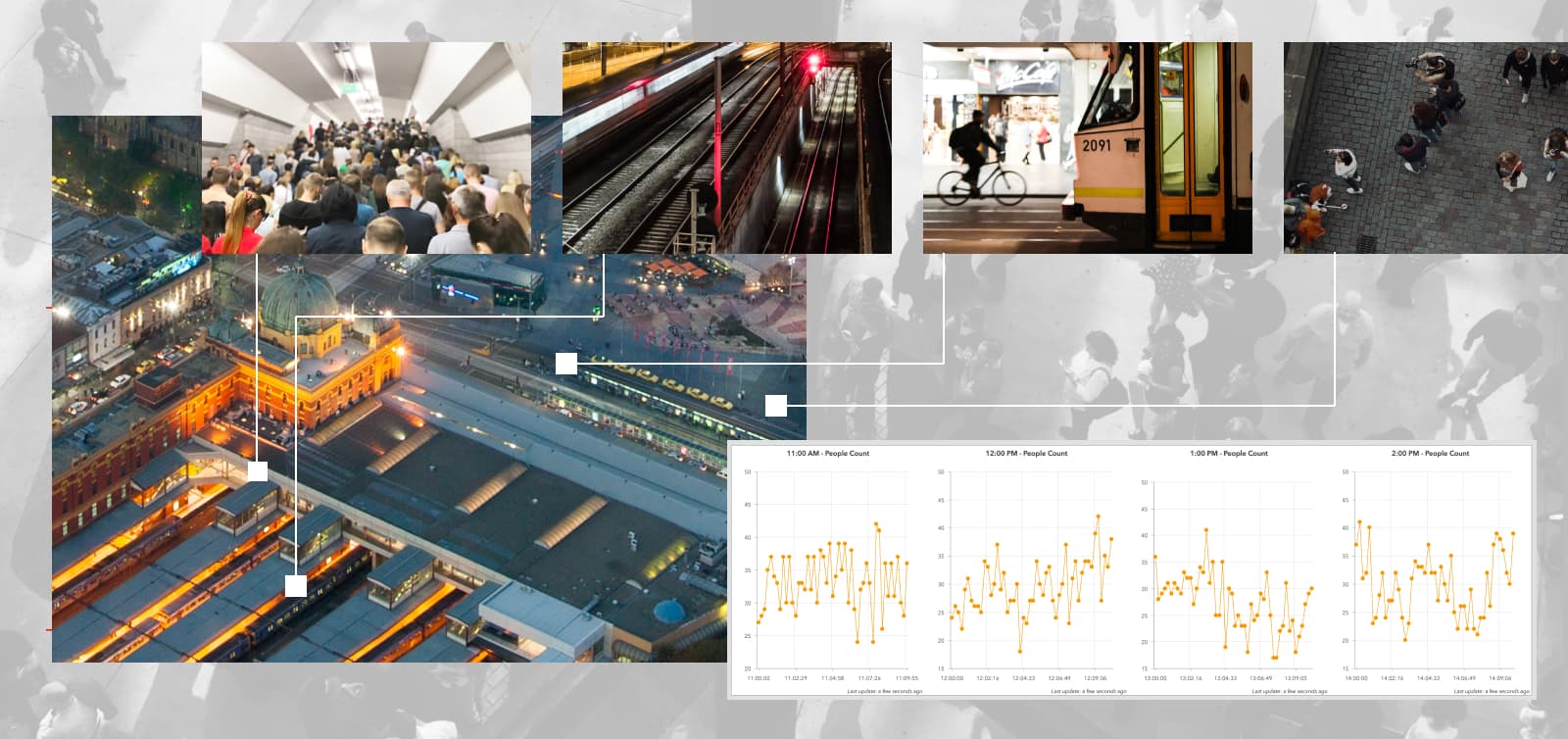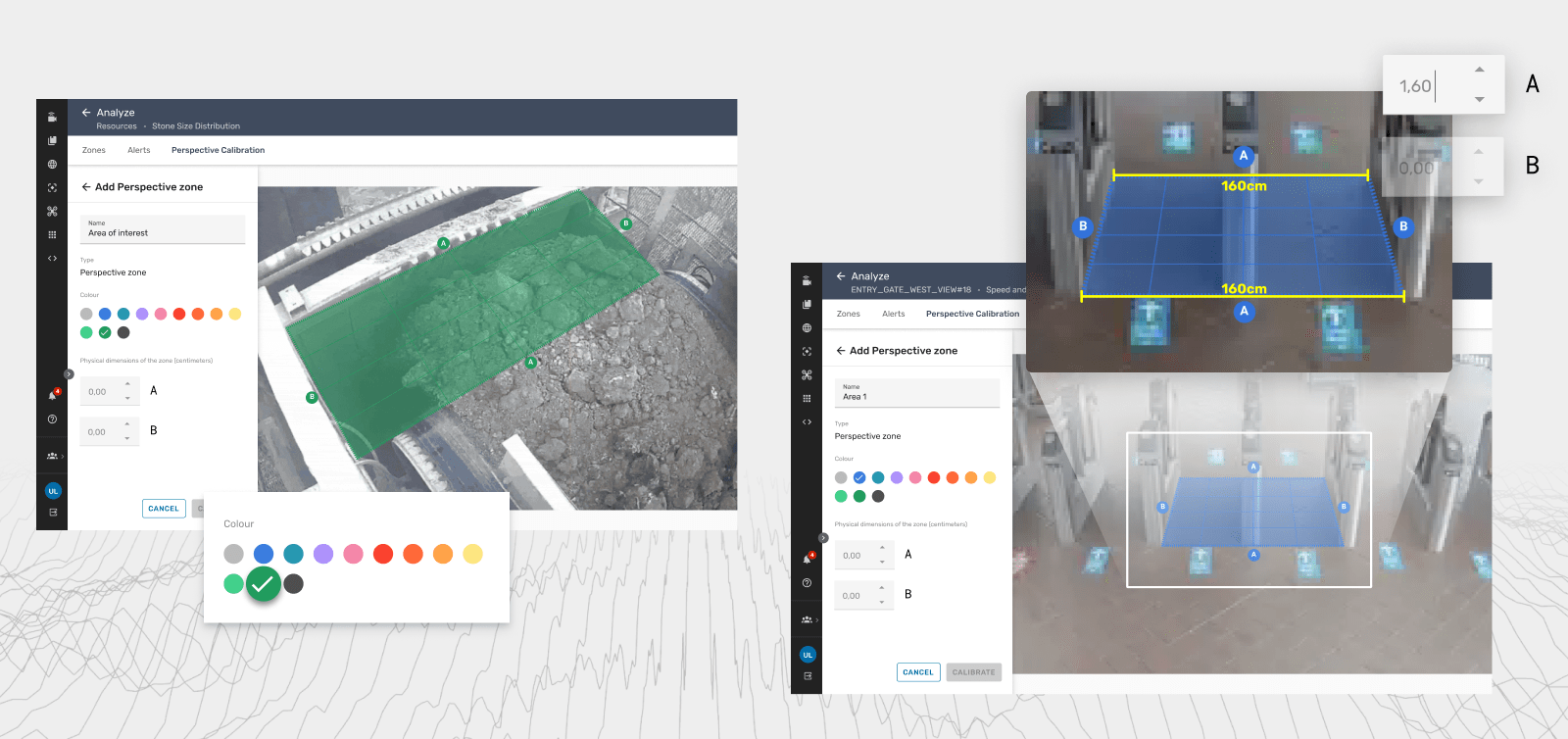In today's rapidly evolving world of transportation, managing and securing vast networks of cameras has become a critical necessity. Whether it's monitoring traffic flow, ensuring passenger safety or enhancing overall operational efficiency, video surveillance plays an indispensable role. However, the challenge lies in efficiently harnessing data from these cameras, often scattered across a network and extracting meaningful insights. This is where Machine Learning AI video analytics comes into play, offering a revolutionary solution to unify camera feeds, delivering rich data sets without the need to rely solely on internal video management systems (VMS).
The Challenge - Siloed Camera Networks
Transportation networks, such as railways, highways and waterways, employ a multitude of cameras, each serving a specific purpose. Traditionally, these cameras have operated in silos, managed by individual VMS systems, resulting in data fragmentation and limited interoperability. This fragmented approach not only hampers the ability to extract valuable insights but also leads to inefficiencies in resource allocation, response times, and decision-making.
The Solution - AI Video Analytics
AI video analytics is a transformative technology that bridges the gap between disparate camera networks, enabling seamless integration and intelligent analysis. Here's how it works:
1. Camera Agnosticism
One of the key advantages of AI video analytics is its ability to work with virtually any camera, regardless of make, model, or brand. This camera agnosticism allows organizations to leverage their existing infrastructure, eliminating the need for costly camera replacements or upgrades.
2. Unified Data Fusion
AI-powered platforms can aggregate feeds from various cameras across the network, providing a unified view of the entire transportation ecosystem. This unified data fusion enables operators to monitor multiple locations simultaneously, streamlining surveillance and enhancing situational awareness.
3. Real-time Analytics
With AI algorithms, video feeds are continuously analyzed in real-time, automatically identifying and flagging anomalies, such as traffic congestion, security breaches, or operational issues. This proactive approach enables faster response times and better decision-making.
4. Rich Data Sets
AI video analytics goes beyond simple video monitoring. It generates rich data sets that can be used for in-depth analysis, predictive modeling, and performance optimization. This data-driven approach empowers transportation authorities to make informed decisions, improve safety, and enhance passenger experiences.
5. Reduced Reliance on Internal VMS
While traditional VMS systems have their place, AI video analytics can significantly reduce the reliance on them. Instead of relying solely on internal VMS, organizations can leverage AI-powered platforms to extract valuable insights directly from camera feeds, minimizing the need for complex and expensive infrastructure.
Real-world Applications
The applications of AI video analytics in transportation are wide-ranging:
-
Traffic Management: AI can monitor traffic flow, detect congestion and optimize signal timing in real-time, reducing congestion and improving overall traffic management.
-
Security: Enhanced facial recognition, object tracking and anomaly detection help improve security, allowing for quicker responses to potential threats.
-
Predictive Maintenance: By analyzing video data, AI can predict equipment failures, helping reduce downtime and maintenance costs.
-
Passenger Experience: AI can assess passenger behavior and satisfaction, allowing for better service delivery and operational improvements.
-
Environmental Impact: Monitoring vehicle emissions and traffic patterns aids in reducing environmental impact and planning for sustainable transportation.
Conclusion
Transportation networks are entering a new era of efficiency and intelligence, thanks to AI video analytics. By unifying camera feeds and extracting rich data sets, organizations can enhance safety, streamline operations and make data-driven decisions without being solely reliant on internal VMS systems. This transformative technology not only improves the overall transportation experience but also paves the way for a more connected and secure future in the world of transport. Embrace the power of AI video analytics to unlock the full potential of your camera networks and redefine the way you manage and secure your transportation infrastructure.
Learn more about our Transport Solutions.





